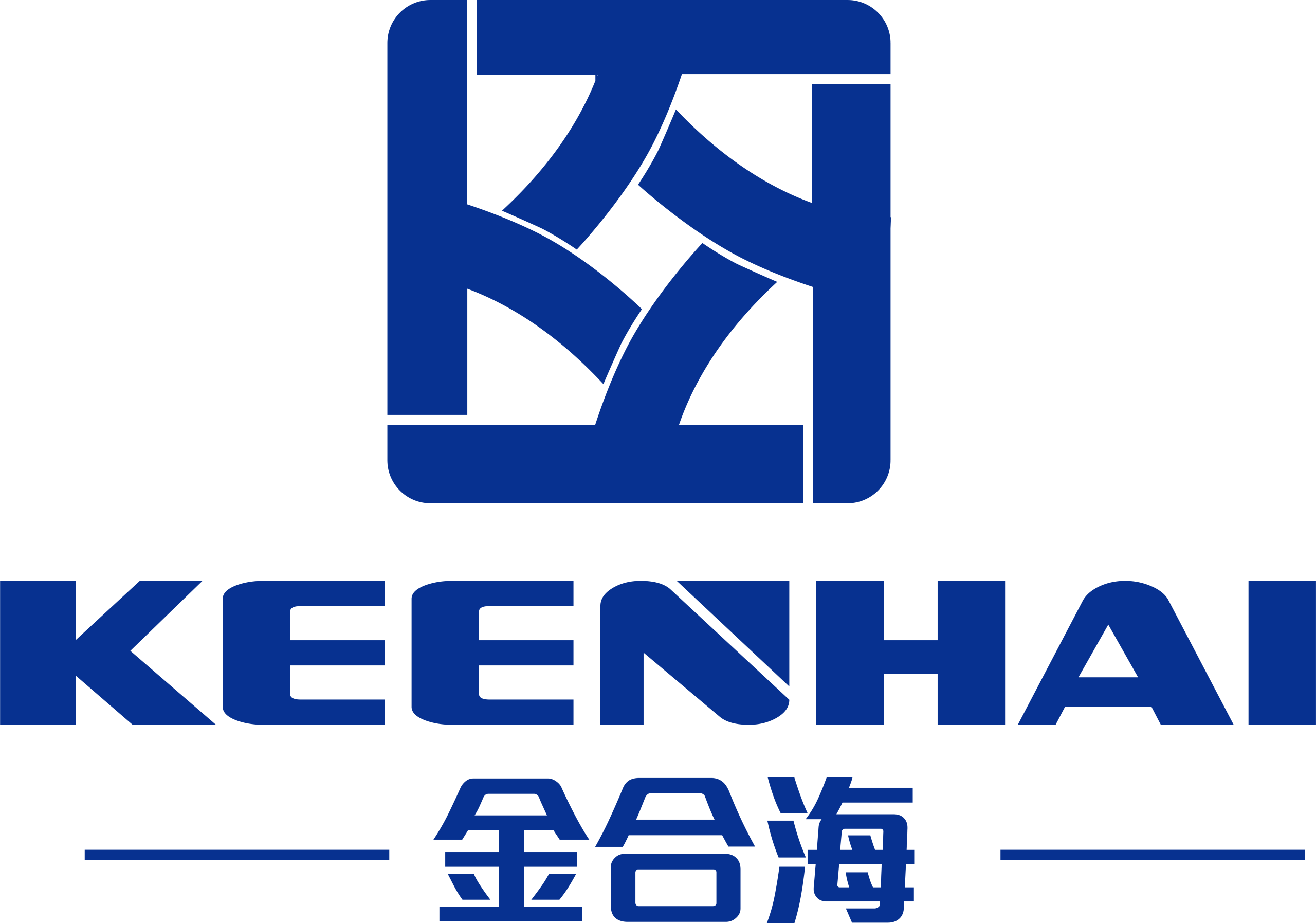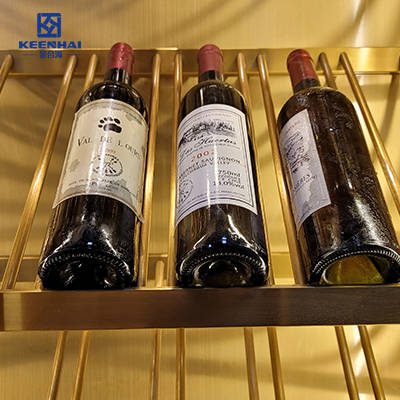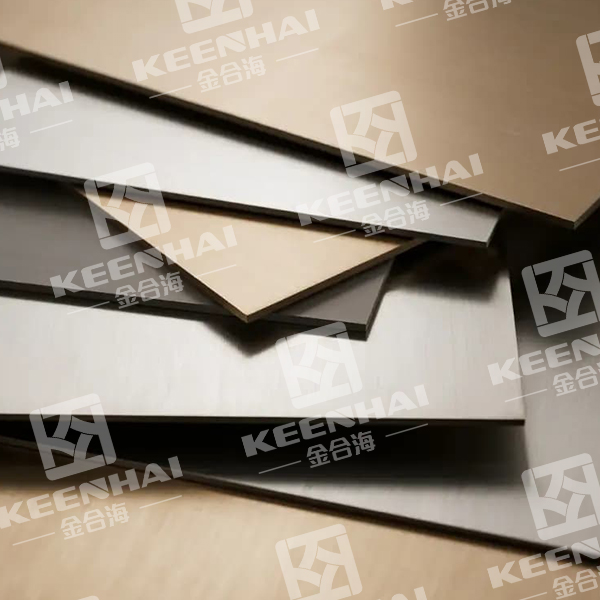PVD stainless steel elevator door panels are high-quality metal doors coated using the Physical Vapor Deposition (PVD) process, which enhances durability, scratch resistance, and color variety. These panels are built on premium stainless steel, typically type 304 or 316, ensuring corrosion resistance even in high-traffic or humid environments. PVD coating provides long-lasting finishes in shades like gold, bronze, and graphite, while maintaining a sleek, modern look. These doors are widely used in commercial buildings, luxury hotels, and residential high-rises where both functionality and aesthetic appeal are essential.
Key Features of PVD Stainless Steel Elevator Door Panels
Durability and Scratch Resistance
When architects choose PVD stainless steel elevator door panels, the first thing they notice is how well these doors handle daily wear. A typical stainless steel panel used in elevators comes with a base hardness rating of 200–250 HV on the Vickers scale, but once coated with PVD, the hardness can reach 1,200–2,500 HV, which is nearly 5–8 times stronger. That extra density translates into doors that resist scratches from keys, luggage carts, or even cleaning tools.
To put that in perspective, aluminum doors often show visible scratches within months in high-traffic buildings, while PVD-treated stainless steel panels retain a flawless surface for over 10 years, even under constant public use. The combination of hardness and a dense coating makes them a preferred material in places like airports, luxury hotels, and shopping malls where aesthetics must stay intact regardless of heavy usage.
Corrosion Protection
One of the strongest selling points of stainless steel products is their natural resistance to rust. When combined with PVD, this property gets significantly enhanced. Traditional untreated stainless steel can resist ཟག་ཟིན། in dry indoor environments for 15–20 years, but in coastal or humid environments, its lifespan shortens drastically due to exposure to chloride.
With PVD coating, the protective barrier acts like a shield, preventing direct contact between the environment and the steel. Tests performed under ASTM B117 salt spray conditions show that PVD-coated panels last over 500–1,000 hours without visible corrosion, while uncoated panels show deterioration within 48–72 hours. This makes them ideal for coastal high-rises or subway stations where salty air and moisture attack most building metals. The stainless steel product line offered by pvdstainlesssteel has repeatedly shown extended life cycles in these environments, which reduces the need for constant replacements.
Here’s a quick comparison of corrosion resistance performance:
| Material Type | Salt Spray Test (ASTM B117) | Expected Lifespan in Coastal Areas |
|---|---|---|
| Standard Stainless Steel | 48–72 hours | 8–10 years |
| PVD Stainless Steel Panel | 500–1,000 hours | 18–25 years |
| Painted Mild Steel | <24 hours | 2–3 years |
Aesthetic Variety and Color Options
A major reason why architects specify pvd stainless steel elevator door panels is the design flexibility they offer. Traditional stainless steel gives only the classic silver-gray look, but PVD introduces a wide spectrum of colors such as bronze, rose gold, champagne, titanium black, and even custom shades matched to specific interior design requirements.
Color consistency is another strong advantage. Unlike paint, which fades after exposure to cleaning chemicals or UV light, PVD finishes hold their tone for decades. For instance, a luxury hotel in Dubai tested both painted elevator panels and PVD panels in 2015. After five years of continuous use, the painted panels lost about 30% of their color intensity, while the PVD panels maintained a 95% color retention rate.
Another interesting detail is texture customization. Builders can select mirror finishes, brushed patterns, etched designs, or even embossed surfaces, giving elevators a unique appearance that fits the identity of the building. This versatility explains why PVD-coated panels have become a standard in modern metal door panel solutions for premium commercial projects.
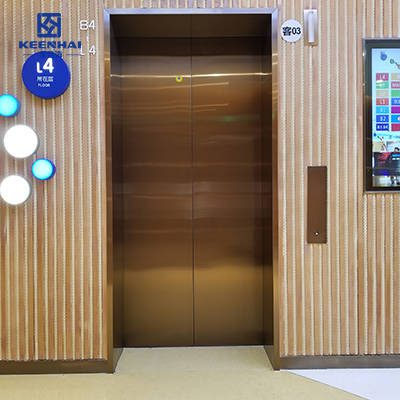
Manufacturing Process
Stainless Steel Base Material
Every pvd stainless steel elevator door panel starts with a carefully selected base alloy. Most manufacturers rely on 304 or 316 stainless steel, depending on the building requirements. Type 304 works well in most indoor environments, offering a chromium content of around 18–20% and nickel between 8–10.5%, which provides a solid balance of strength and corrosion resistance. Type 316, on the other hand, contains 2–3% molybdenum, which gives it superior durability in coastal or chemical-heavy environments.
The thickness of the sheet is also critical. Elevator panels typically range from 0.8 mm to 1.5 mm in residential projects, while commercial or transportation hubs use thicker sheets up to 2.0 mm for extra rigidity. Before moving to the coating stage, the sheets undergo leveling, trimming, and surface finishing, ensuring the base metal is perfectly flat and free of burrs. A polished or brushed finish is usually applied at this stage, setting the foundation for a flawless surface once the coating is added.
PVD Coating Application Steps
The physical vapor deposition (PVD) process transforms standard stainless steel into a premium finish that architects specify for custom stainless steel elevator doors. The steps include:
-
Surface Preparation – The sheet is cleaned with ultrasonic washing to remove any oil, dust, or micro-residue. This cleaning is followed by a vacuum drying process that reduces moisture to below 0.1%, ensuring perfect adhesion.
-
Vacuum Chamber Placement – Panels are placed inside a chamber where the pressure is reduced to around 10⁻³ Pa, creating an ultra-clean environment free of oxygen and contamination.
-
Target Material Ionization – Titanium, zirconium, or chromium is vaporized using an arc or magnetron sputtering system. The vaporized particles then collide with the surface of the stainless steel sheet.
-
Film Formation – The particles condense on the surface, forming a dense and uniform coating layer. Coating thickness usually ranges between 0.25–0.5 microns, which is enough to provide excellent hardness without altering the dimensions of the panel.
-
བསིལ་གཏོང་དང་མཇུག་སྒྲིལ། – After deposition, the panels are cooled and sometimes polished again to create either a mirror or brushed effect, depending on design requirements.
This controlled process ensures that the final product not only meets but often exceeds architectural standards. It’s this method that allows PVD panels to be marketed as a modern metal door panel solution for high-traffic environments.
Quality Testing and Standards
Quality checks form the backbone of the manufacturing process. After coating, each panel undergoes multiple tests to guarantee performance:
-
Hardness Test: Using a micro Vickers tester, most PVD coatings show hardness levels between 1,200–2,500 HV, making them far superior to standard stainless steel’s 200–250 HV.
-
Adhesion Test: Panels go through a tape test and crosshatch method, ensuring the coating doesn’t peel under mechanical stress.
-
ཚྭ་ཆུ་གཏོར་བའི་འགོག་ཤུགས།: Following ASTM B117 standards, panels are exposed to a 5% NaCl solution at 35°C. PVD-coated panels can withstand 500–1,000 hours without corrosion, while untreated stainless steel typically lasts only 48–72 hours.
-
Color Consistency: Spectrophotometers measure the uniformity of coating, maintaining a Delta E (ΔE) value under 1.5, which is nearly impossible to detect with the naked eye.
By adhering to these standards, manufacturers ensure that every finished panel meets the expectations of architects and property owners. This rigorous testing also protects brand reputation, especially for companies delivering premium pvd stainless steel elevator door panels into international projects.
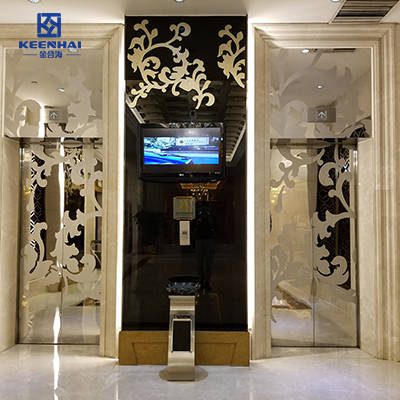
Applications in Elevators
Commercial Building Elevator Doors
In high-traffic commercial environments, elevator doors face constant mechanical stress and exposure to contaminants such as dust, cleaning chemicals, and even food particles in mixed-use towers. Architects and property managers choose pvd stainless steel elevator door panels for their ability to resist dents and scratches while maintaining a polished look. Traffic studies show that a single elevator in a 20-floor office building may open and close more than 1,200 times per day, meaning the surface must withstand constant abrasion without losing its finish.
When comparing traditional painted steel to PVD-coated stainless steel, differences become evident in both longevity and maintenance. Painted steel requires repainting every ལོ་5–7བར།, while PVD stainless steel maintains its color and gloss for over 20 years with routine cleaning. Commercial facilities also save on cleaning costs because PVD-coated panels do not require abrasive cleaning agents, reducing chemical usage by nearly 40% annually.
| Material Type | Average Lifespan (Years) | Maintenance Cycle | Scratch Resistance (Vickers Hardness) |
|---|---|---|---|
| Painted Carbon Steel | 5–7 | Repainting 2–3x | 150–200 HV |
| Standard Stainless Steel | 10–12 | Polishing 1x | 200–250 HV |
| PVD Stainless Steel Panels | 20–25 | Light cleaning | 1200–2500 HV |
This durability makes them a long-term investment, reducing both labor costs and downtime in commercial properties.
Residential High-Rise Installations
In residential towers, design and practicality must coexist. Homeowners and developers increasingly choose custom stainless steel elevator doors because they offer both aesthetic flexibility and long-term resilience. For example, in urban developments across New York and Chicago, surveys indicate that over 65% of luxury high-rise projects specify stainless steel PVD finishes for their elevator interiors and door panels.
One of the most important aspects in residential applications is noise reduction. Because stainless steel sheets with PVD coating are slightly denser than painted metal alternatives, they help dampen vibration and reduce door-closing noise by around 15–20%. This becomes a significant advantage in buildings with 50+ residential floors, where residents expect both quiet operation and elegant design.
Another factor is safety and hygiene. Families prefer surfaces that can be easily disinfected without wearing down. PVD-coated surfaces allow cleaning with neutral pH detergents, avoiding the use of harsh chemicals that can harm children or pets. This has been especially valued in recent years, when elevator hygiene became a major concern for homeowners.
Luxury and Custom Design Projects
Developers in the luxury segment demand far more than durability. They prioritize customization, texture, and unique finishes that reinforce a building’s identity. With PVD technology, manufacturers offer a broad palette of metallic tones ranging from champagne gold and rose copper to graphite black. These finishes allow designers to match the elevator doors with lobby interiors, wall claddings, and even furniture details, creating a seamless visual flow.
For luxury hotels and flagship commercial towers, architects often specify modern metal door panel solutions with mirror-polished PVD coatings, sometimes paired with etched patterns or laser-cut logos. A common workflow includes:
-
Selecting a stainless steel grade based on the environment (304 for interiors, 316 for coastal projects).
-
Choosing a finish type: mirror, hairline, vibration, or etched.
-
Applying a custom PVD color to align with the building’s branding.
-
Performing surface tests to ensure consistent color under different lighting conditions.
Data from premium residential projects in Dubai and Singapore reveals that custom-finished stainless steel panels can increase perceived property value by 7–10%, largely because buyers equate the finish with long-lasting elegance. Unlike painted or vinyl-wrapped doors that fade within a few years, PVD coatings maintain their depth of color and reflective quality across decades, making them a staple in luxury architecture.
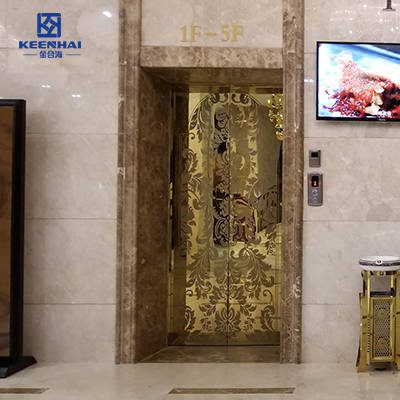
Advantages Over Traditional Elevator Door Materials
Longer Lifespan
PVD stainless steel elevator door panels outperform traditional materials like painted steel, aluminum, or laminated surfaces in both durability and longevity. While painted carbon steel doors often need replacement every ལོ་5–7བར། due to chipping, fading, or corrosion, PVD-coated stainless steel can last 20–25 years even in high-traffic environments. Coastal buildings, where humidity and chloride exposure accelerate metal degradation, particularly benefit from the corrosion-resistant properties of stainless steel.
The extended lifespan is due to a combination of factors: the base stainless steel provides inherent resistance to rust, while the PVD coating creates a dense, scratch-resistant barrier. Architects often specify PVD panels in projects where high usage and minimal maintenance are essential, such as airports, hospitals, and luxury hotels. The long-term savings in replacement costs can reach 30–50% compared to traditional painted doors over a 15-year period.
བདག་སྐྱོང་ཉུང་བ།
Routine upkeep of PVD-coated panels remains simple and cost-effective. Standard cleaning requires only neutral pH detergents and soft microfiber cloths, avoiding harsh abrasives that would damage paint or laminate finishes. Facilities managers report 40–60% lower annual maintenance costs compared to traditional steel or aluminum doors.
For example, in a 15-floor commercial building with 4 elevators, cleaning PVD-coated panels takes approximately 20 minutes per week. Comparable painted steel doors would require extra labor to touch up scratches or remove corrosion spots, taking 45–60 minutes per week. This efficiency also reduces downtime, ensuring elevators remain fully operational during peak hours.
The smooth surface of PVD panels also prevents the buildup of dirt and bacteria, which makes them ideal for healthcare facilities or high-density residential buildings. This aligns with modern architectural standards that prioritize hygiene and long-term performance. For more context, see the architecture hygiene practices often applied in public buildings.
Enhanced Appearance
One of the most notable advantages of modern metal door panel solutions is aesthetic versatility. Traditional materials often limit designers to a single color or finish, whereas PVD coatings provide a wide spectrum of options—bronze, rose gold, titanium black, champagne, or custom shades tailored to interior design themes.
The coating retains its shine and uniformity for decades. Tests in high-traffic luxury hotels indicate that PVD-coated doors maintain 95% of their initial gloss after five years, while painted alternatives fade by 30–40% over the same period. Texture options also enhance visual impact: brushed, mirror-polished, or patterned surfaces can be combined with etched logos or subtle branding elements, creating a sophisticated look without compromising durability.
This combination of long life, minimal maintenance, and design flexibility makes PVD stainless steel elevator doors the preferred choice for developers seeking both functional and aesthetic excellence. Their appeal extends beyond elevators, influencing trends in architectural metal cladding for walls, railings, and decorative panels in modern buildings.
For more information on PVD stainless steel applications, check out our detailed guide: Which is better 304 vs 316 stainless steel?
